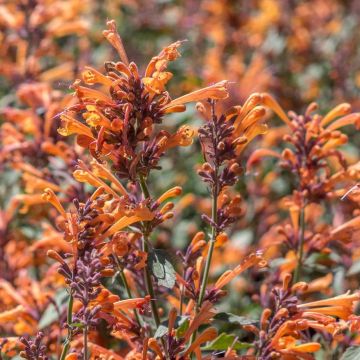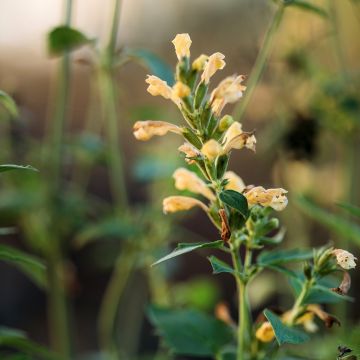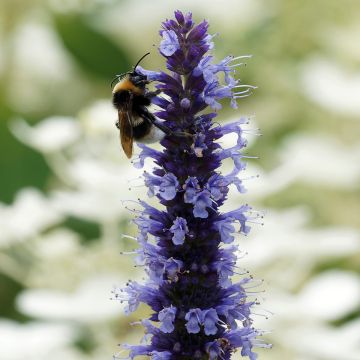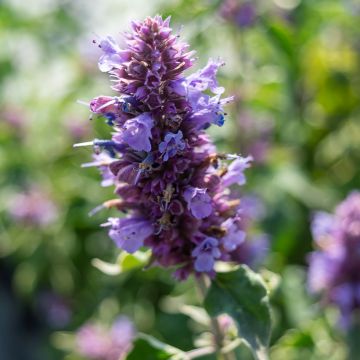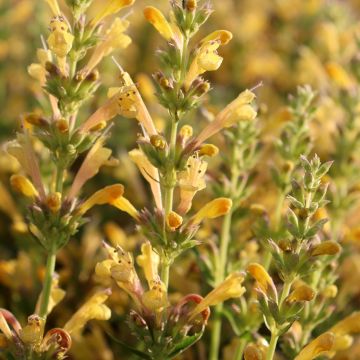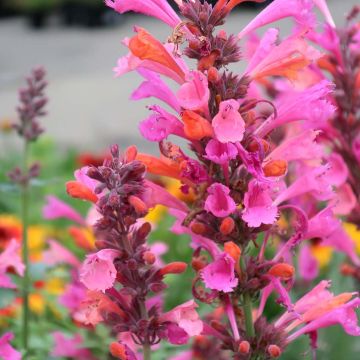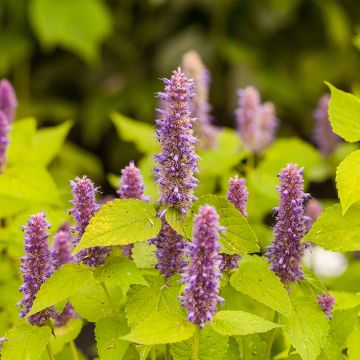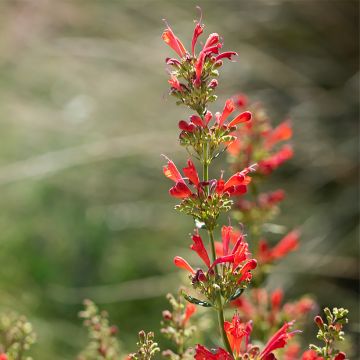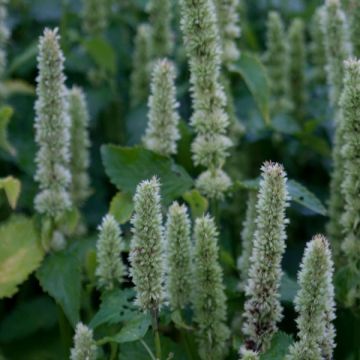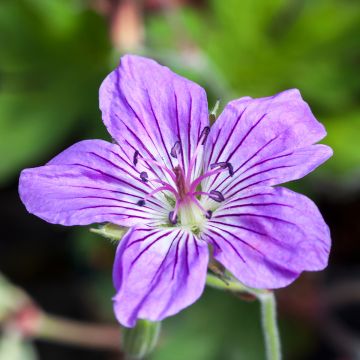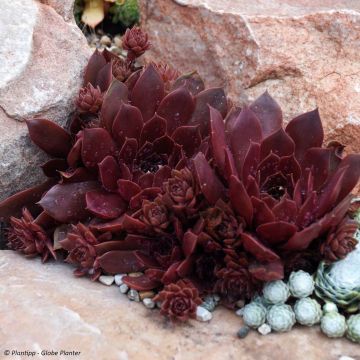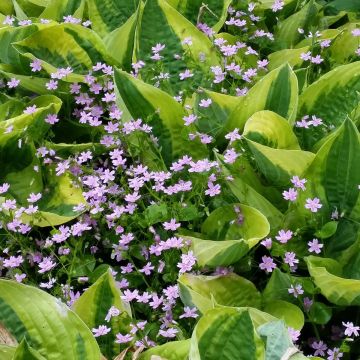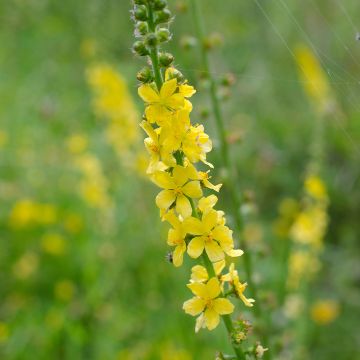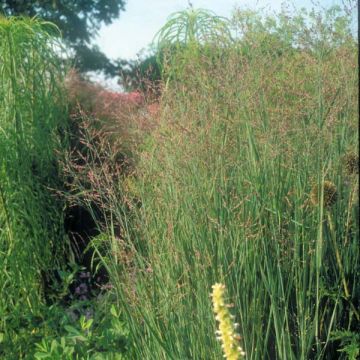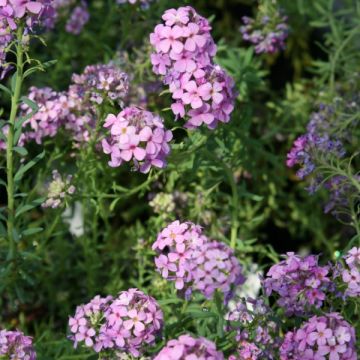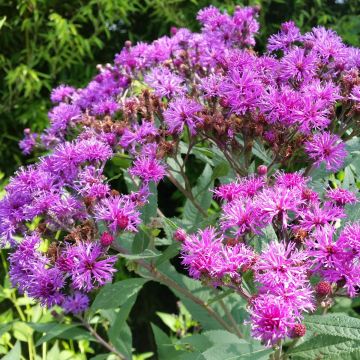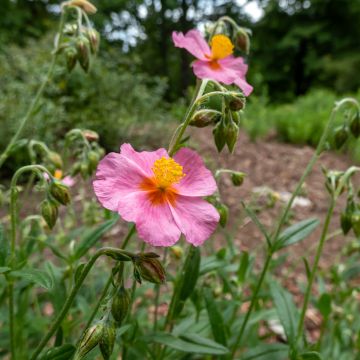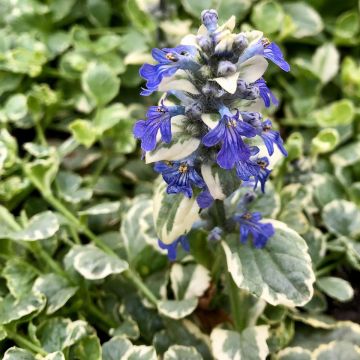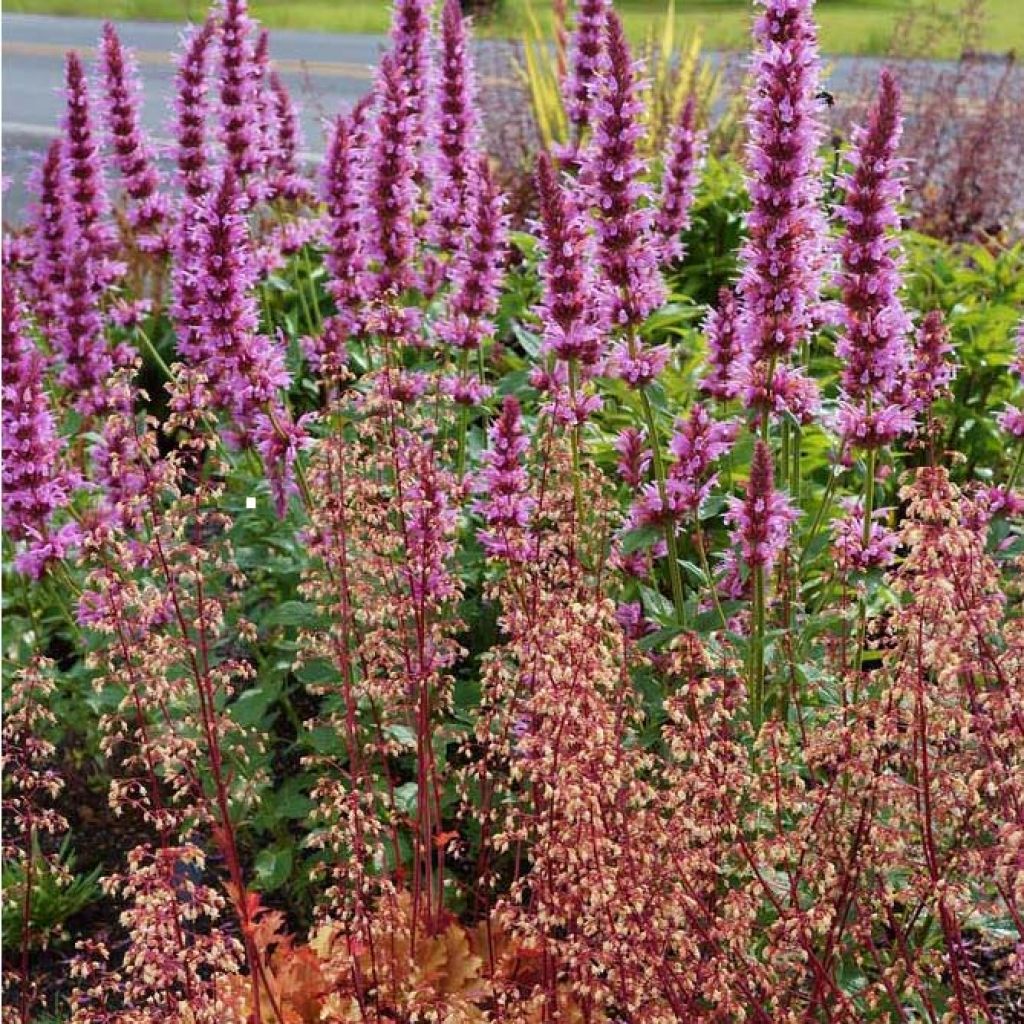

Agastache Cotton Candy® - Agastache hybride
Agastache Cotton Candy
Agastache Cotton Candy
Giant hyssop 'Cotton Candy'
This plant carries a 12 months recovery warranty
More information
We guarantee the quality of our plants for a full growing cycle, and will replace at our expense any plant that fails to recover under normal climatic and planting conditions.
From €5.90 for pickup delivery and €6.90 for home delivery
Express home delivery from €8.90.
Does this plant fit my garden?
Set up your Plantfit profile →
Description
Agastache 'Cotton Candy' is a recent variety selected in the USA for its abundant flowering and its soft pink colour, which is quite rare in these plants. This honey-bearing perennial plant is aromatic and ornamental, with a compact, dense, and bushy habit. It blooms continuously from mid-summer to autumn. Its small, pale-pink flowers are enclosed in calyxes of a deeper pink on its spikes. This pastel variety easily blends with a multitude of other plants, in a natural bed or on a patio.
Agastache 'Cotton Candy' belongs to the large Lamiaceae family, just like mint, sage, and thyme. This herbaceous perennial is relatively hardy in well-drained soil. It forms a small upright clump, 60cm (24in) tall when in bloom and 45cm (18in) wide. Its square-sectioned stems bear elongated leaves, which are triangular in shape and 8cm (3in) long. They bear serrated edges. The slightly greyish-green leaves grow along the entire length of the angular floral stems. When crushed, they emit a very pleasant minty fragrance. The continuous flowering period extends from July to October. It takes the form of upright, thin and dense inflorescences. Each small tubular flower with 2 pale-pink lips is surrounded by dark pink bracts. This particularly honey-rich and nectar-rich flowering attracts a large number of bees and butterflies.
Agastache 'Cotton Candy' prefers sheltered and sunny borders and beds with a slightly wild appearance. It also does well in pots on a patio. In hot regions, it should be well-watered during the flowering period. In cooler regions, the soil should be particularly healthy and well-drained. It is a carefree perennial where it thrives. It adds substance to beds composed of grasses (stipas, eragrostis, pennisetums), herbaceous salvias, nepetas, viper's bugloss (Echium vulgare), phacelia, sainfoin, goldenrod, and asters. It also blends very well with shrubby cinquefoils in white or pink, for example. In the vegetable garden, it can grow alongside thyme, savory, chervil, or basil. The dried flowers keep very well in bouquets. The leaves are traditionally used in cooking as a substitute for mint, or in herbal teas after drying.
The highly fragrant flowers and leaves are edible. They are delicious in salads or in oriental dishes.
Report an error about the product description
Agastache Cotton Candy in pictures
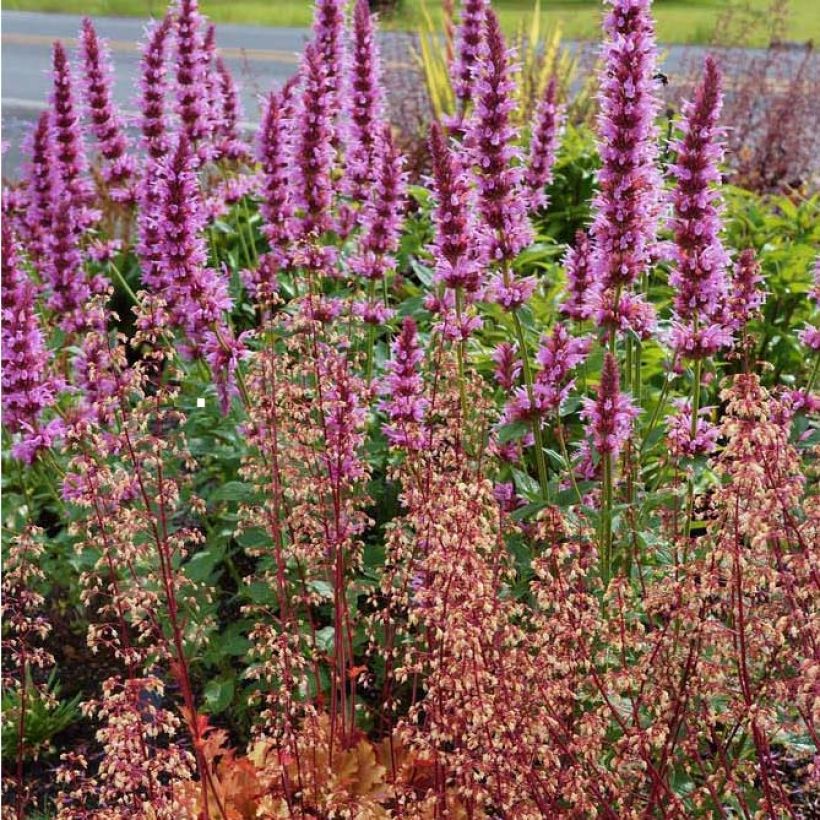

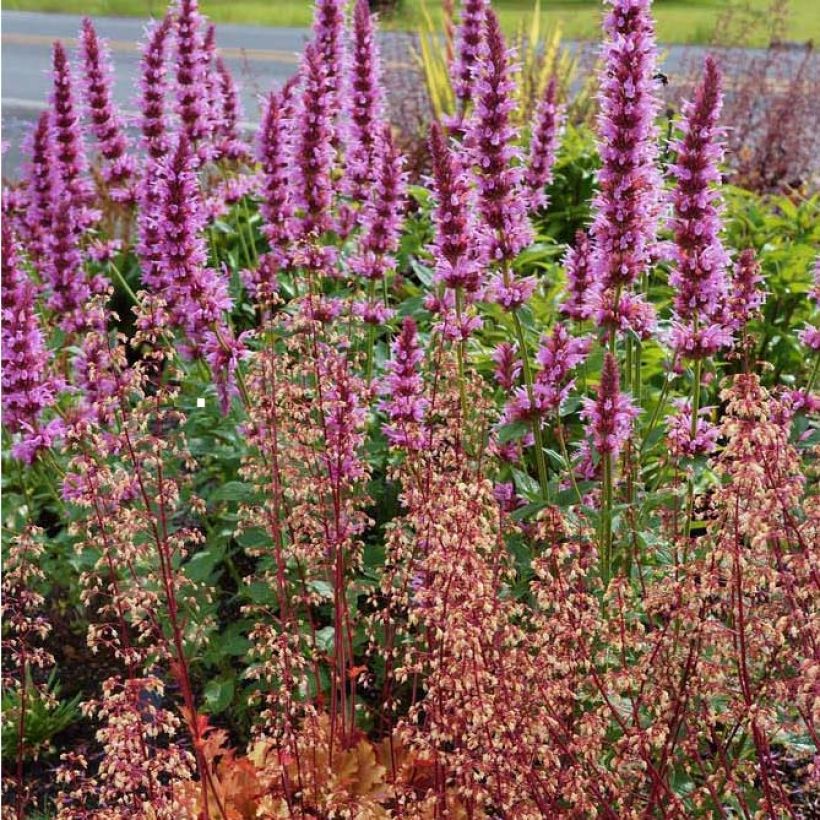

Flowering
Foliage
Plant habit
Botanical data
Agastache
Cotton Candy
Lamiaceae
Giant hyssop 'Cotton Candy'
Cultivar or hybrid
Other Agastache
Planting and care
Agastache 'Cotton Candy' appreciates warmth. It dreads waterlogged soils in winter. In heavy soil, dig a hole 30cm (12in) in all directions, pour in pure sand and plant the stump without adding soil. This plant requires a sunny exposure, sheltered from the strongest frost. During very harsh winters, cover the stumps with straw or dead leaves to form a thick mulch. It prefers fertile, loose, moist but well-drained soil. The plant can withstand periods of temporary drought, which nevertheless harm the flowering.
Planting period
Intended location
Care
This item has not been reviewed yet - be the first to leave a review about it.
Summer flowering perennials
Haven't found what you were looking for?
Hardiness is the lowest winter temperature a plant can endure without suffering serious damage or even dying. However, hardiness is affected by location (a sheltered area, such as a patio), protection (winter cover) and soil type (hardiness is improved by well-drained soil).

Photo Sharing Terms & Conditions
In order to encourage gardeners to interact and share their experiences, Promesse de fleurs offers various media enabling content to be uploaded onto its Site - in particular via the ‘Photo sharing’ module.
The User agrees to refrain from:
- Posting any content that is illegal, prejudicial, insulting, racist, inciteful to hatred, revisionist, contrary to public decency, that infringes on privacy or on the privacy rights of third parties, in particular the publicity rights of persons and goods, intellectual property rights, or the right to privacy.
- Submitting content on behalf of a third party;
- Impersonate the identity of a third party and/or publish any personal information about a third party;
In general, the User undertakes to refrain from any unethical behaviour.
All Content (in particular text, comments, files, images, photos, videos, creative works, etc.), which may be subject to property or intellectual property rights, image or other private rights, shall remain the property of the User, subject to the limited rights granted by the terms of the licence granted by Promesse de fleurs as stated below. Users are at liberty to publish or not to publish such Content on the Site, notably via the ‘Photo Sharing’ facility, and accept that this Content shall be made public and freely accessible, notably on the Internet.
Users further acknowledge, undertake to have ,and guarantee that they hold all necessary rights and permissions to publish such material on the Site, in particular with regard to the legislation in force pertaining to any privacy, property, intellectual property, image, or contractual rights, or rights of any other nature. By publishing such Content on the Site, Users acknowledge accepting full liability as publishers of the Content within the meaning of the law, and grant Promesse de fleurs, free of charge, an inclusive, worldwide licence for the said Content for the entire duration of its publication, including all reproduction, representation, up/downloading, displaying, performing, transmission, and storage rights.
Users also grant permission for their name to be linked to the Content and accept that this link may not always be made available.
By engaging in posting material, Users consent to their Content becoming automatically accessible on the Internet, in particular on other sites and/or blogs and/or web pages of the Promesse de fleurs site, including in particular social pages and the Promesse de fleurs catalogue.
Users may secure the removal of entrusted content free of charge by issuing a simple request via our contact form.
The flowering period indicated on our website applies to countries and regions located in USDA zone 8 (France, the United Kingdom, Ireland, the Netherlands, etc.)
It will vary according to where you live:
- In zones 9 to 10 (Italy, Spain, Greece, etc.), flowering will occur about 2 to 4 weeks earlier.
- In zones 6 to 7 (Germany, Poland, Slovenia, and lower mountainous regions), flowering will be delayed by 2 to 3 weeks.
- In zone 5 (Central Europe, Scandinavia), blooming will be delayed by 3 to 5 weeks.
In temperate climates, pruning of spring-flowering shrubs (forsythia, spireas, etc.) should be done just after flowering.
Pruning of summer-flowering shrubs (Indian Lilac, Perovskia, etc.) can be done in winter or spring.
In cold regions as well as with frost-sensitive plants, avoid pruning too early when severe frosts may still occur.
The planting period indicated on our website applies to countries and regions located in USDA zone 8 (France, United Kingdom, Ireland, Netherlands).
It will vary according to where you live:
- In Mediterranean zones (Marseille, Madrid, Milan, etc.), autumn and winter are the best planting periods.
- In continental zones (Strasbourg, Munich, Vienna, etc.), delay planting by 2 to 3 weeks in spring and bring it forward by 2 to 4 weeks in autumn.
- In mountainous regions (the Alps, Pyrenees, Carpathians, etc.), it is best to plant in late spring (May-June) or late summer (August-September).
The harvesting period indicated on our website applies to countries and regions in USDA zone 8 (France, England, Ireland, the Netherlands).
In colder areas (Scandinavia, Poland, Austria...) fruit and vegetable harvests are likely to be delayed by 3-4 weeks.
In warmer areas (Italy, Spain, Greece, etc.), harvesting will probably take place earlier, depending on weather conditions.
The sowing periods indicated on our website apply to countries and regions within USDA Zone 8 (France, UK, Ireland, Netherlands).
In colder areas (Scandinavia, Poland, Austria...), delay any outdoor sowing by 3-4 weeks, or sow under glass.
In warmer climes (Italy, Spain, Greece, etc.), bring outdoor sowing forward by a few weeks.

































